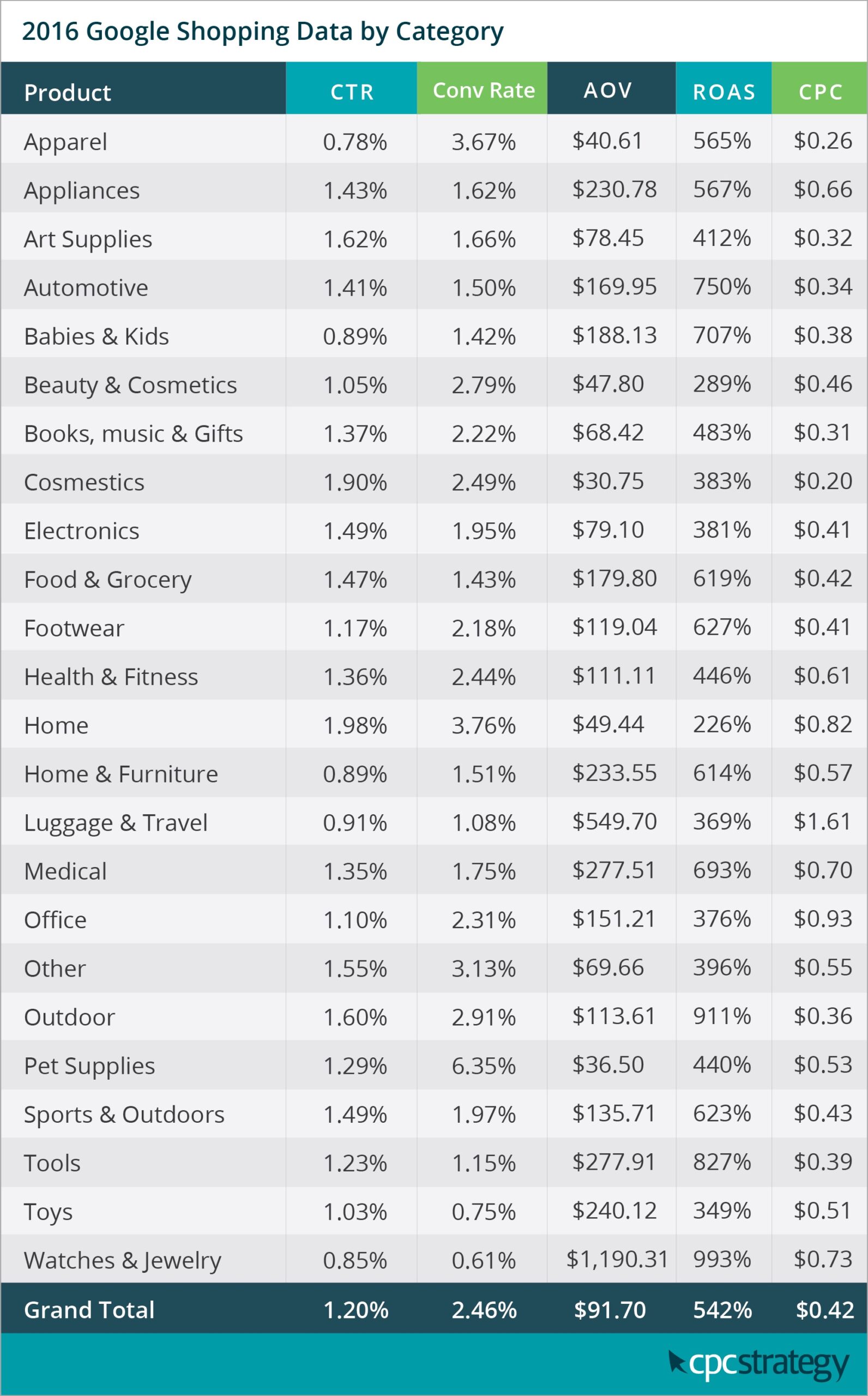2016 Google Shopping Performance by Category


CPC Strategy recently released a new study on Google Shopping 2016 performance. We believe these metrics help to serve as a benchmark for retail brands in the Google Shopping landscape.
We decided to take a closer look at this data to study Google Shopping as a whole and by category throughout 2016.
We broke down each category across the Shopping platform to compare:

In 2015, the categories with the highest CPCs included:
1. Office ($2.19)
2. Home & Furniture ($1.01)
3. Luggage and Travel ($.99)
In 2015, the categories with the lowest CPCs included:
1. Apparel ($.35)
2. Book, Music ($.41)
3. Sports & Outdoor ($.44)
In 2016, the categories with the highest CPCs included:
1. Luggage & Travel ($1.61)
2. Office ($.93)
3. Watches & Jewelry ($.73)
In 2016, the categories with the lowest CPCs included:
1. Cosmetics ($.20)
2. Apparel ($.26)
3. Book, Music & Gifts ($.31)
“While Google does provide some competitive data and will suggest bid amounts, most online retailers have absolutely no idea how their performance stacks up to everyone else out there, much less those in a similar space as them in key metrics such as CTR, ROAS, CPC, etc,” Tien Nguyen, Director of Technology at CPC Strategy said.
“This data should give some semblance of the sort of playing field a merchant is up against, but it should not be an end all of what you should be bidding or what sort of return you should be getting because of various factors and most importantly what your own goals are.”
Unfortunately, a lot of advertisers don’t utilize rule-based bidding strategies to optimize their Google Shopping campaigns as much as they should.
Many times, advertisers think Shopping is just a ‘set it and forget it’ type of management. But, whenever we do an audit of a Shopping campaign, we usually end up finding a lot of wasted spend and the potential for opportunity.
As an agency, we’ve discovered that implementing a specific set of bid rules to the product catalog is a better way to understand your inventory and products.
If applied correctly, rule-based bidding technology can help retailers streamline their bidding process, save time, and optimize product-level campaign management and efficiency.
Each business is unique and marketing managers should have access to the ability to build their own customized rules to fit their business needs.
If you would like to learn more on how to pull back on wasted ad spend, or when to reduce bids on non-profitable items, check out our recent post: “4 Bid Rules You Should Be Running on Google Shopping“
For more on 2016 Google Shopping data, email [email protected]
